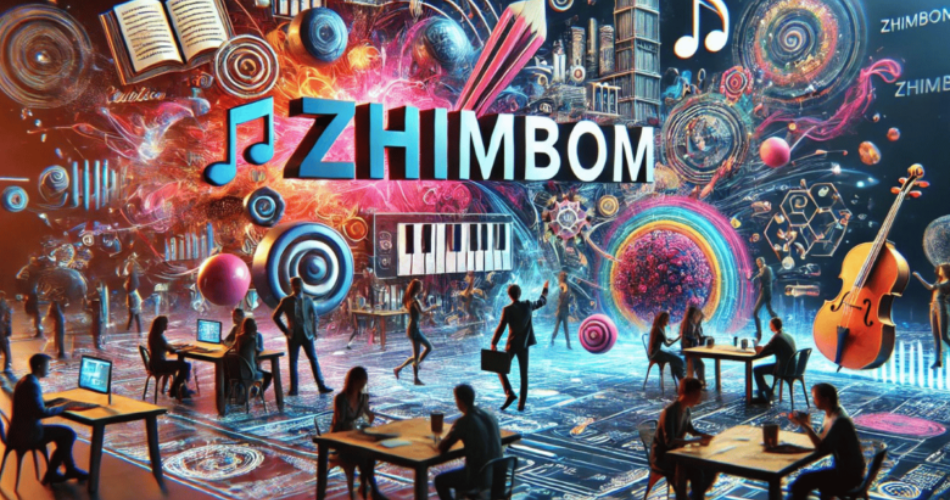Exploring the Rise of “Zhimbom”: A Cultural Phenomenon in Modern Society
Introduction
In today’s rapidly evolving world, language continues to be shaped by different communities, introducing new terms and expressions that quickly become part of mainstream conversation. One such term that has recently caught the attention of many is “zhimbom.” Known for its catchy, rhythmic sound, this phrase has grown in popularity, but there’s more to it than meets the eye. Its origins and the deeper meanings behind it reflect a rich cultural heritage. In this article, we’ll dive into the background of “zhimbom,” its cultural relevance, and how it’s redefining modern communication.
The Evolution of “Zhimbom”: A Cultural Phenomenon
The term “zhimbom” has an interesting and multifaceted background, originating from various cultural and linguistic influences. While it was first popularized within certain musical circles, particularly those with roots in African and Caribbean traditions, its meaning has grown over time. Today, it symbolizes far more than just a word—it encapsulates a way of life, an expression of attitude, and a form of self-expression.
Musical Foundations
Music has always been a powerful conduit for sharing cultural identity, emotions, and experiences, and “zhimbom” is no different. Its origins can be traced back to genres that emphasize strong rhythmic elements, communal participation, and the celebration of life. Styles such as Afrobeat, reggae, and soca have historically used similar-sounding terms to capture the spirit of joy, unity, and the infectious energy that dance and music bring to a community. As these genres gained recognition worldwide, “zhimbom” found its way into broader conversations, crossing cultural and linguistic barriers to become a globally recognized expression.
Social Media’s Impact on Its Growth
In today’s digital age, cultural expressions are no longer confined to specific regions or groups. Social media platforms like TikTok, Instagram, and YouTube have played a significant role in the rise of “zhimbom.” Viral music clips, dance challenges, and creative trends featuring this term have rapidly gained traction, embedding it into global youth culture. The upbeat sound and vibrant energy it conveys resonate deeply with online communities, turning “zhimbom” into a staple of modern digital communication and social interaction.
What Does “Zhimbom” Represent in Modern Society?
The meaning of “zhimbom” has evolved alongside its increasing use, transforming from a term rooted in specific cultural contexts into one with multiple layers of interpretation today.
A Symbol of Celebration and Joy
At its core, “zhimbom” embodies the essence of celebration. Whether it’s a lively party, a vibrant community gathering, or an impromptu meet-up with friends, the term is often used to express a sense of fun and excitement. The phrase “let’s zhimbom” is an invitation to savor the present moment, encouraging everyone to embrace happiness and live freely. It speaks to a carefree mindset, where people are motivated to let go of their worries and simply enjoy life’s pleasures.
Empowerment Through Self-Expression
More than just a celebratory term, “zhimbom” has taken on deeper meaning in marginalized communities. It has emerged as a powerful symbol of empowerment, providing individuals with a way to boldly express their identities, cultures, and values. Through creative outlets such as music, fashion, and art, “zhimbom” is used to assert individuality in spaces where people may feel underrepresented. It has come to signify pride in one’s heritage and a refusal to be silenced, allowing for unapologetic self-expression and authenticity.
“Zhimbom” in Popular Culture: A Growing Influence
The term “zhimbom” has made a significant mark on various aspects of modern popular culture, influencing everything from music and dance to fashion and lifestyle. As its popularity continues to rise, artists, creators, and communities worldwide have embraced it, integrating the concept into their work and daily lives.
Music and Dance Movements
“Zhimbom” has found a strong foothold in the music world, where numerous artists have incorporated it into their songs, creating lively, upbeat tunes that inspire people to move. These tracks have often become favorites at parties, synonymous with good times and energetic dancing. Social media platforms have also played a crucial role in spreading “zhimbom,” with viral dance challenges encouraging fans across the globe to join in, share their moves, and be part of a shared celebration of joy and freedom.
Fashion Trends Influenced by “Zhimbom”
Beyond music, “zhimbom” has sparked creativity in the fashion world, influencing designers and fashion labels to craft collections that echo its dynamic, free-spirited vibe. The fashion associated with “zhimbom” is characterized by bold color choices, eye-catching patterns, and a laid-back, expressive style. Those who embrace the “zhimbom” aesthetic often do so as a way to celebrate individuality, creativity, and the idea of living in the moment, making it more than just a trend but a lifestyle statement.
By reshaping these key areas of pop culture, “zhimbom” has become more than just a term; it represents a movement centered on joy, expression, and unity. Its influence shows no sign of slowing down, as it continues to inspire communities around the world.
The Broader Influence of “Zhimbom” on Communities
Far from being just a catchy term, “zhimbom” has left a deep mark on communities, playing a significant role in strengthening unity and safeguarding cultural identity. Its increasing use has helped foster connections between diverse groups while offering a meaningful way for people to embrace and celebrate their heritage in today’s interconnected world.
Building Unity Through Collective Celebration
A key impact of “zhimbom” lies in its unique ability to unify people. In a time when the world often feels fragmented by political, social, and cultural divides, “zhimbom” emerges as a beacon of shared joy. Whether it’s through vibrant music festivals, lively dance gatherings, or local community celebrations, the term inspires a sense of belonging. It promotes inclusivity, creating welcoming environments where individuals from diverse backgrounds can come together to celebrate in harmony, forging bonds that transcend differences.
Revitalizing Cultural Heritage and Fostering Pride
The rising popularity of “zhimbom” has also ignited a resurgence of cultural pride among younger generations. For those with African or Caribbean roots, the term has become a vital link between time-honored traditions and modern-day self-expression. By embracing “zhimbom,” communities are finding ways to preserve their rich cultural legacies while staying engaged with current trends. This allows them to celebrate their unique heritage while ensuring that the historical significance of the term remains intact as it continues to evolve with time.
The Global Reach of “Zhimbom”
Originally rooted in specific cultural traditions, “zhimbom” has now expanded beyond its origins, captivating audiences around the world. It has become a global phenomenon, embraced by artists and creators from various cultures who have infused the term into their own art forms, creating unique blends of cultural influences.
Cross-Cultural Artistic Collaborations
As “zhimbom” continues to gain momentum internationally, it has sparked numerous cross-cultural collaborations. Musicians, visual artists, dancers, and performers from different parts of the world are integrating the essence of “zhimbom” into their work, merging it with their respective artistic traditions. These collaborations often result in innovative and inspiring creations, celebrating universal themes such as joy, creativity, and self-expression. By doing so, artists highlight the unifying power of art, transcending geographic and cultural boundaries.
Global Festivals and Events
Major music festivals, which emphasize cultural diversity, have started to prominently feature “zhimbom” in their lineups. These events attract a global audience, further expanding the term’s reach and influence. At these festivals, attendees from diverse backgrounds unite to dance, celebrate, and experience the energy of “zhimbom,” reinforcing its role as a global symbol of unity and festivity. Through these shared experiences, the cultural phenomenon of “zhimbom” continues to grow, connecting people through its joyful spirit.
Challenges and Criticisms Surrounding “Zhimbom”
While “zhimbom” has gained widespread popularity, its rise has not been free of controversy. As with many emerging cultural movements, its growth has ignited discussions about the fine line between cultural celebration and exploitation, as well as concerns about its commercialization.
Concerns of Cultural Appropriation
One of the most significant criticisms aimed at “zhimbom” is the potential for cultural appropriation. As the term spreads beyond its original community, there is a fear that it may lose its authentic meaning. For those who hold “zhimbom” as an integral part of their cultural identity, seeing it used by individuals unfamiliar with its origins can be hurtful. There is a growing call for those outside of the culture to engage with “zhimbom” in a way that is respectful, acknowledging its deep-rooted history and significance to the people who have long embraced it.
The Commercialization of “Zhimbom”
The commercialization of “zhimbom” presents another challenge. As fashion and entertainment industries latch onto its growing popularity, there is a risk of oversimplifying or watering down its cultural value. With more brands and artists incorporating “zhimbom” into their products or marketing campaigns, the essence of what makes it meaningful to its original community may be at risk of being lost. Striking a balance between mainstream appeal and preserving its core significance is critical to ensuring that “zhimbom” continues to resonate as a genuine expression of culture rather than just a fleeting trend.
The Future of “Zhimbom”
Looking ahead, “zhimbom” is set to continue making waves in modern culture, not just as a word but as a growing movement. Its ability to evolve while staying true to its core principles—joy, empowerment, and celebration—highlights its enduring appeal as a form of cultural expression. By maintaining a strong connection to the communities and traditions from which it emerged, “zhimbom” holds the promise of leaving a significant imprint on the global cultural stage.
In essence, “zhimbom” represents more than just a trending term; it serves as a vibrant expression of joy, identity, and unity. Its power lies in its ability to bridge cultures, inspire empowerment, and champion celebration. Whether through music, fashion, or community, “zhimbom” continues to influence various aspects of global culture. The future challenge will be to both preserve its roots and embrace its ongoing evolution, ensuring its relevance in an ever-changing cultural landscape.
Stay informed with the latest news and updates on Worldinsforbestake.com






